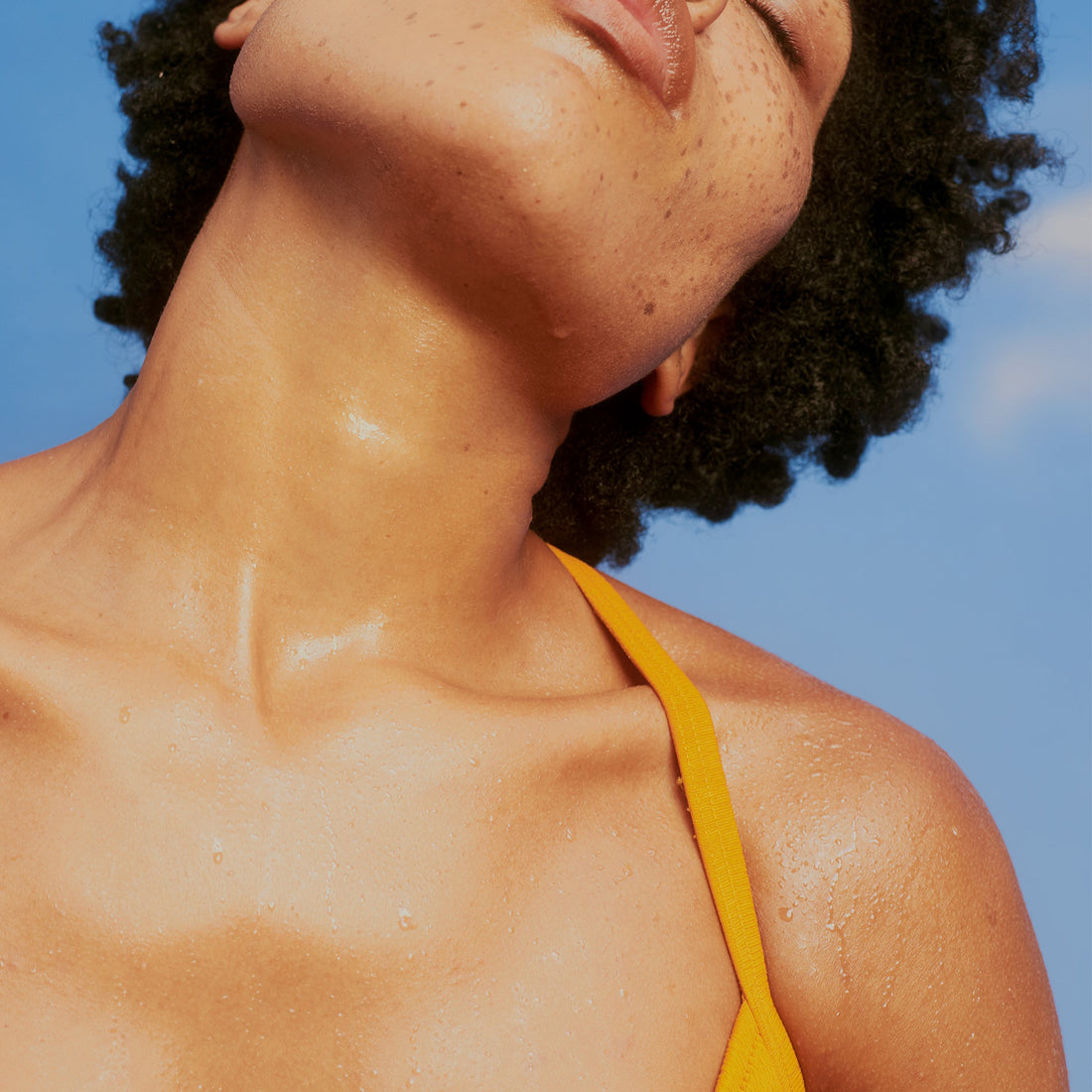When was the last time you thought about your body? It was recently, wasn’t it? We think about our bodies all the time: how they look, how big or small they are, how they are seen by others, and how much value they have. We are truly obsessed. According to Google reporting, 93 million selfies are taken on average per day, yet we are still incredibly dissatisfied with our bodies. In 2016, a Refinery29 survey found that we feel differently about our bodies every day — sometimes positively and sometimes negatively, depending on the stimulus. Most of us are at home in a collective panic because of COVID-19, wondering what is going to happen and how long we can be isolated from each other. We are operating without distractions from how our brains feel about our bodies as we scroll past everyone’s quarantine diet and get-fit plan during this time. “Talk of the ‘quarantine 15,’ a horrifyingly timely update to the ‘freshman 15,’ was inevitable,” writes Amy McCarthy in the Eater article “Stop Torturing Yourself With Quarantine Diets.” “Many of us were more worried about getting fat than contracting an illness that makes it so difficult to breathe that you might die.” Even in a crisis, we’re still feeling the pressure to seek an arbitrary satisfaction of an ideal body. As we find ourselves trying to understand the world around us, it becomes more imperative that we get to know our own bodies through improving our mental health. Enter: Body Neutrality, a movement dedicated to moving through the world without fixating on appearance and appreciating the body for its mechanical value.
So What Is Body Neutrality?
Body Neutrality is a relatively newish term from the last five to 10 years that was first spotted on the internet around 2015, according to HuffPost. It popped back up into the cultural conversation around 2016 when a Vermont wellness retreat, Green Mountain, started offering a Body Neutrality Workshop taught by program director Anne Poirier, BS, CSCS, CIEC. In the workshop, “There’s a whole movement talking about loving our bodies. But it’s kind of a long jump to move there from dissatisfaction,” Poirier said during a workshop a writer for The Cut attended. “Some people are just going to land in body neutrality, which is the term we utilize here for somewhere in the middle.”
Body neutrality focuses on what the body does instead of how it looks.
While body positivity has its good qualities, we also have to remember that actual body positivity is not entirely possible. We cannot love ourselves every day, and to say we can is irresponsible. On the other hand, there is something beautiful about the concept of neutrality when it comes to the body. It focuses on what the body does instead of how it looks. Our bodies can get up in the morning, it can do some stretches, it can give high-fives (wear gloves and #socialdistance), and it can be a vehicle for what we want to see and experience for the day without thinking about how good or bad you look. Thus, it allows for a body-neutral person to focus on other things that don’t involve the appearance. The whole concept rests upon the body simply being, without passing judgment upon ourselves, and allowing for the participant to prompt mindfulness for all of our activity. Will it feel good to move this way? Do I want to eat right now? How do I want to feel tonight? This mindfulness allows us to tap into the things we really want without worrying if we aren’t measuring up to an ideal standard of beauty. According to the American Psychological Association, mindfulness research has been linked to reducing stress, increased memory retention, better focus, less emotional reactivity, and better relationship satisfaction. By using body neutrality to its fullest, we can combat that negative self-talk we have in our heads to a more conscious state of being. A body-neutral state is one where our feelings about ourselves have nothing to do with our appearance, but sadly we’ve been taught that our appearance is intrinsically connected to our value and our accomplishments because . . . they sometimes are. The Fuqua School of Business at Duke University conducted a 2010 study that identified a beauty premium in the workforce, ”in which workers of above-average beauty earn more than workers with below average looks.” There is even data that suggests people of size make less money than straight-sized people because of the negative implications of being fat.
Before heading to bed, give thanks to your body and all the little mechanisms it takes for you to start and end your day.
Interestingly, gender matters when it comes to weight discrimination. According to a study in the Journal of Applied Science, the researchers found that thinness in a woman meant getting paid a higher salary than a heavy woman but saw that thin men would still be paid more than women but not more than bigger men. So while body neutrality is an ideal state where appearance isn’t equitable to value, we have to recognize the work that must be done on ourselves to course-correct how we’ve been made to feel about our appearance.
Right Now Might Be Body Neutrality’s Moment
This is actually a great challenge to take on while we’re all staying inside and guarding our health amid a global pandemic. As we spend our days wondering if and when this will end, we are free from the constant pestering of social norms as we lay draped in spandex and working from our couches. Is this the moment that will help us take control of our own state of neutrality? Taking some time each day to recognize how you feel; acknowledging that feeling will get you closer to the neutrality mindfulness the movement suggests. The more we remove our outer appearance from a variable in our decision-making, the closer we will be to the deeper facets of our personalities, and that will rid us of being obsessed with the appearance of our bodies. Body neutrality can start right now. Spend a good amount of time auditing how you think about yourself and body throughout the day, and challenge the negative thoughts with some that recognize the work your body puts in every single day. Think about every movement as a reminder that the mind and the body are fully connected. Eat food that will make you feel good. Or try moving in a way that will boost your mental health.
How To Find Body Neutrality Today
- Ask yourself what you need right now. Maybe you need some water or to stretch or talk to a friend. Be mindful and listen to the things your body is asking for, and let that guide your day.
- Dress in clothes that make you feel comfortable and express the person you are instead of wearing clothes that you “should” wear because a magazine told you that’s what flattering for your body. Body neutrality removes what the body should be doing, and replaces it with what the body wants to do.
- Before heading to bed, give thanks to your body and all the little mechanisms it takes for you to start and end your day. This includes all the little movements and the ways in which you go about being a vehicle for different experiences. Give yourself a little mental thanks for how you walk through the world.
- When you’re feeling particularly negative about your body, remember that it isn’t realistic to always feel great. The human experience doesn’t allow for everything to be wonderful all the time, so it’s important to recognize what you’re feeling, why, and the power in finding value in who we are outside of your appearance.
- Redirect your compliments of others to be about things other than their body or appearance. Instead of saying, “Great haircut” or “You look like you lost some weight!” (Note: Never say this), say something neutral that allows the recipient to receive the message without making anyone feel negatively towards themselves.
Body Neutrality Is Bigger Than Individual Change
In order to truly prevail, body positivity has to exist for everyone and all places for it to be more than a mindset and actually inhabit how we make, create, produce, and who we deem acceptable to take up space. For example, a plus-size person with body-neutral beliefs will still have trouble purchasing clothes, getting paid what they are worth, having a positive healthcare experience, and being able to fit in certain seats. People who have the privilege of neutrality already can walk around the world without having their body questioned in particular spaces. While a positive, it’s important for us to be critical of body neutrality and who is and isn’t allowed to partake. All we can really do is our best if we can and when we can. Both body neutrality and body positivity have enormous advantages and allow us to get closer to ourselves in each of their teachings. The body is a perfect-yet-imperfect set of limbs and experiences, and it's the responsibility of the individual to live the way we want and accept ourselves when we can—no matter what movement you identify with.




















































